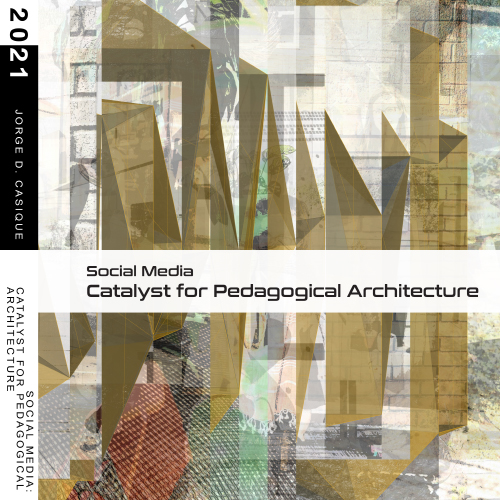Social Media: Catalyst for Pedagogical Architecture
Abstract
Placeness has always been a debated subject in architecture, especially to which extent site influences - or not - the final result of architecture. Despite the concept being long-discussed, from the Genius Loci of the Roman treaties to the modernist movement that erased the concept - placeness is ever-changing, and now with social media, places take on different meanings for everyone. The difference is that now our culture of images as a record of experiences has made placeness a larger, much more diverse concept that is available for architects to consider when making decisions about a project. After many decades of positivism, Aldo Rossi reintroduced the idea of place - or locus - into the discourse of architecture in his manifesto The Architecture of the City. Rossi defines locus as: "a relationship between a certain specific location and the buildings that are in it. It is at once singular and universal." It's not uncommon for practitioners to focus on the physical aspect of a place, while sometimes missing on opportunities for culture and identity to feed a project. This studio proposal seeks to amplify the idea of the locus in architecture and what it means today. It is possible to create meaningful, engaging architecture that is rooted in understanding the identity of communities. The methodology proposed implicates finding this unique sense of placeness by utilizing the Theory of Image and visual studies of relevant imagery from social media in order to generate an architecture that's responsive to how communities see themselves. The study presents an innovative alternative to traditional site analysis that is often focused on only the physical variables subjected to (only) the designer's interpretations. Architecture that is born through the lens of a community's expressive means will be effectively more conceptually engaging.
Subject
PlacenessGenus Loci
Architectural design
School buildings
Architects and community
Social media
Historic districts
Texas--Austin
Department
ArchitectureCollections
Citation
Casique, Jorge (2021). Social Media: Catalyst for Pedagogical Architecture. Master's thesis, Texas A & M University. Available electronically from https : / /hdl .handle .net /1969 .1 /196156.


